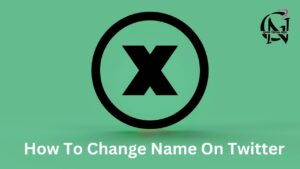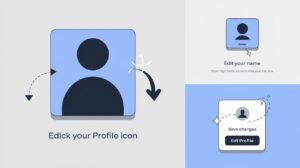The computer keyboard contains symbols beyond the alphabet and numbers that have unique names. The @ symbol is called “at sign”, # is called “pound sign” or “number sign”, & is called “ampersand”. Other symbols include asterisk, backslash, brackets, caret and more – each with a specific name that indicates its purpose or origins.
Computer Keyboard Symbols
The computer keyboard contains many specialized symbols used to command programs and express formatting. Symbols like @, #, $, % are used in programming languages and file paths. Function keys F1-F12 execute commands while Ctrl, Alt and Shift keys modify other keys.
Punctuation Marks
Punctuation marks like periods, commas, quotes and other symbols indicate pauses, additions or changes in structure within written language. Correct punctuation improves clarity and readability. Marks have specific meanings and applying them properly changes the understanding of a sentence.
Mathematical Symbols
Mathematical symbols like plus, minus, multiplication, division and other signs represent operations and relationships in quantitative expressions. Symbols allow for compact representation of formulas and equations. Mathematics relies on an established system of symbols to concisely express numerical concepts and calculations.
Special Characters
Special characters extend writing beyond the typical alphabet with symbols for currency, copyright, registered, sections and other designations. Characters like @, #, $, & have taken on new roles in technology for networking, tagging and formatting. Programmers employ a wide variety of special symbols in coding.
Brackets and Parentheses
Brackets and parentheses aid organization and flow in writing by grouping related words, numbers or other elements. They delineate logical fragments within sentences, equations, addresses, and other notation. Applying brackets and parentheses correctly keeps embedded information visually and logically separated.
Logical and Other Symbols
Logical symbols represent common operations like AND, OR and NOT to build compound conditional statements. Other interface symbols like arrows, lines and shapes offer visual affordances to guide users through processes and hierarchies. Sysadmin uses a range of symbols to script systems and workflows.
Arrow Symbols
Arrow symbols pointing left, right, up or down help convey direction, flow and linkage between elements both concretely and abstractly. Arrows feature prominently in diagrams for processes, networks, hierarchies and mathematical relations. Programmed arrow keys allow navigation on screens.
Also Read Which Pair Of Names Is Identical?
Function Symbols
Common function symbols like sin, cos, tan, log stand for standard mathematical operations. Symbols provide a concise way to describe transformations and relationships. Programmers define custom functions through symbolic notation to build reusable blocks of code.
Icons visually encapsulate concepts through pictographs, replacing lengthy text labels. Emoticons combine symbols into graphic expressions of emotion. Icons and emoticons facilitate recognition and communication through simplified imagery instead of words.
Keyboard Keys Names
Every key on a computer keyboard has an established name like letter keys for the alphabet, number pad for digits, function keys F1-F12, and control modifiers. Understanding key names helps one learn keyboard navigation and command entry for tasks.
Alphanumeric Keys
The QWERTY section of alphanumeric keys provide the typed character set of letters and numbers. These basic building blocks allow for input of words, figures and other elements into documents and programs. Proper finger placement is important for efficient typing on alphanumeric keys.
Backspace/Delete Key
The backspace key moves the cursor backwards and deletes the previous character for corrections or rework. The delete key (or Del key) removes the character under the cursor. Both provide essential editing capability and work in slightly different contexts.
Enter/Return Key
The enter or return key submits or concludes an input statement to initiate execution or move to the next line. This consolidation of multiple keystrokes has become standardized for completing an input across programs and devices with virtual keyboards.
Tab Key
The tab key navigation key indents text or moves the cursor forward through predefined tab stops on a page layout. In programming, the tab character organizes code readability. Tabs remain a versatile tool for alignment, spacing and program control flow.
Escape Key
The escape key cancels an ongoing operation or returns to a previous setting or menu. It provides a safety exit from an unintended process or error state. Context menus for applications assign common commands to the escape function.
All Computer Keyboard Symbol Names List

Ampersand (&)
Asterisk (*)
At Sign (@)
Backslash ()
Brackets ([])
Caret (^)
Colon (:)
Comma (,)
Dollar Sign ($)
Equals (=)
Exclamation Point (!)
Greater Than (>)
Hash/Pound Sign (#)
Less Than (<)
Minus/Hyphen (-)
Percent (%)
Period (.)
Plus (+)
Question Mark (?)
Quotation Marks (“”)
Semicolon (;)
Slash (/)
Tilde (~)
Underscore (_)
Pipe (|)
Backtick (`)
Curlies ({})
Arrow Symbols
Function Keys
Alphanumeric Keys
Enter/Return Key
Tab Key
Delete Key
Backspace Key
Escape Key
U.S. keyboard symbols

Punctuation:
Period (.)
Comma (,)
Question mark (?)
Exclamation point (!)
Colon (:)
Semicolon (;)
Mathematical:
Plus (+)
Minus/hyphen (-)
Equals (=)
Asterisk (*)
Slash (/)
Brackets:
Square brackets ([])
Curly brackets ({})
Angle brackets (<>)
Logical:
Quotation marks (“”)
Apostrophe (‘)
At symbol (@)
Pound/number sign (#)
Ampersand (&)
Percent (%)
Dollar sign ($)
Commands:
Backslash ()
Caret (^)
Underscore (_)
Tilde (~)
Pipe (|)
Backtick (`)
Navigation:
Arrow keys
Enter
Backspace
Delete
Tab
Caps Lock
Function keys
Short Keys
Ctrl+A to Select All
Ctrl+Z to Backward
Ctrl+B to Bold
Ctrl+C to Copy
Ctrl+V to Past
If you want to write capital words then there are two ways .
First click the Caps Lock Button then words are capital .
Second Hold the Shift Button and write words that are capital words.
If you want to 1 2 3 then click and hold the Shift key and write 1 2 3 .
Symbols on a Windows Keyboard
The Windows keyboard layout contains standard symbols like brackets, pipes, slashes alongside Microsoft-specific keys. The Windows logo opens the Start menu. Context menu activates by right clicking the mouse.
Symbols on a Mac Keyboard
The Mac keyboard has symbols for macOS functions like command and option that modify letters. Touch Bar on newer models displays situational shortcuts. Emojis are accessed through a dedicated icon on keyboards.
Special Symbols Using Keyboard Shortcuts
Pressing key combinations produces symbols not found directly on keyboards. Examples include Alt codes for international characters or storing formatting commands. Shortcuts improve workflow versus using menu paths.
Symbols using Windows shortcuts
Holding Windows key with another opens shortcuts menus. Key combinations insert symbols like ©, TM, intervals in letters. Alt keys with numbers enter special characters. Shortcuts facilitate speedy formatting and layout tasks.
Symbols using Mac shortcuts
Pressing command, control and option keys with letters triggers shortcuts. Examples include ©, TM, keyboard views, and text formatting. Touch Bar displays dynamic options for application commands. Well chosen shortcuts boost productivity.
Also Read Facebook Page Name Ideas
FAQ’s
What is the @ symbol called?
The @ symbol is commonly called the “at sign” based on its original use in email addresses to distinguish the username from the domain name.
What does # mean?
The # The symbol is known as the “pound sign” or “number sign”. It is used extensively in social media to mark hashtags and online surveys.
What is the & called?
The & symbol is called the “ampersand”. It originated as a ligature combining the Latin letters E and T, and is still used to denote “and” in some contexts.
What do the {} symbols represent?
The { and } symbols are called “curly brackets” or “braces”. They are commonly used in programming and online markup languages to delineate blocks of code or content.
What is the $ symbol named?
The $ symbol is known as the “dollar sign”. It is primarily used to denote currency, especially the US dollar, as well as some variables in programming languages.
What does % stand for?
The % symbol represents “percent”. It indicates a number out of one hundred or a ratio compared to a whole amount.
What is that ! symbol called?
The ! the symbol is referred to as an “exclamation point” or “exclamation mark”. It conveys emphasis or importance and is commonly used in notifications and warnings.











